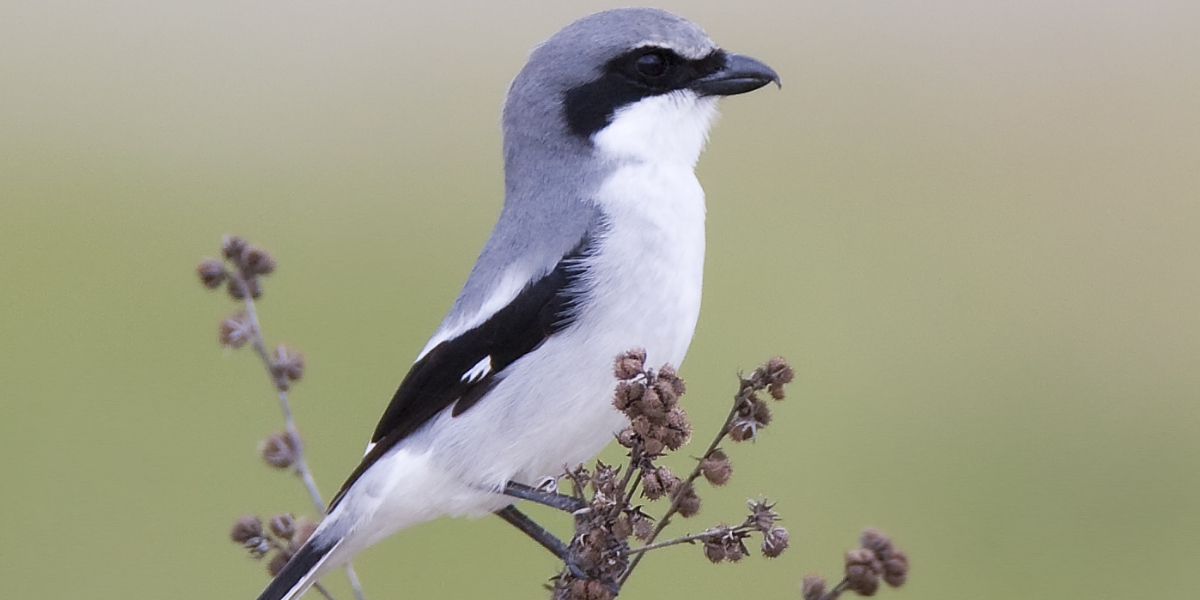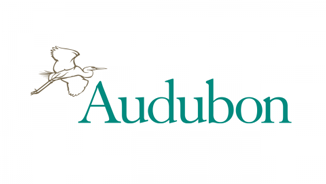
Posted December 1st 2022
Global Study Reveals About Half of All Birds in Decline
Birds are an integral part of our ecosystem. From pollination and seed dispersal to insect and rodent control, birds play a vital role in maintaining balance within our environment. However, without proper attention being paid to their well-being, birds could soon become a thing of the past.
In fact, according to a recent study, far more avian species are losing ground than gaining. The expansive review, titled The State of the World’s Birds, showed that more than 5,200 different species of birds are known or suspected to be declining.
In today’s blog, we’ll be taking a closer look at this insightful review, its significance and how we can prevent further declines.
The State of the World’s Birds: A Global Review
Almost half the world’s total population of birds is known or suspected to be declining, according to an expansive review analyzing half a century of bird population research published in the journal Annual Review of Environment and Resources.
The State of the World’s Birds report, which is released every four years by BirdLife International, estimates that only a mere 39 percent (around 3,800 species) of bird species are relatively stable, and fewer than 700 species demonstrate population increases.
Among birds on the International Union for Conservation of Nature (IUCN) Red List of Threatened Species, almost 400 birds worldwide had their conservation status deteriorate in the past three decades (moving from vulnerable to threatened or threatened to endangered). This is five times more than the number of bird species with an IUCN status that has changed for the better.
The review finds disappearing and degraded habitat – stemming from climate change, urbanization, agricultural intensification, and international trade– to be the leading driver of bird declines worldwide.
This global inquiry comes after a 2019 study, published in the journal Science, which documented the loss of nearly 3 billion birds in North America. Review coauthor and retired conservation scientist Ken Rosenberg says seeing this pattern of population declines and extinction on a global scale is incredibly disconcerting.
Birds are a Vital Part of Our Ecosystem and Culture
The primary reason this review causes such an upset is because of the great level of importance birds play in our ecosystem.
Birds provide an essential service to the ecosystem. Without them, our environment would be in a state of disarray. Birds serve many functions that are vital for keeping our planet balanced and healthy.
Here are some examples of the important responsibilities birds are tasked with.
Seed Dispersal
Seed dispersal is the transport of seeds from plants to new locations, where they can germinate and grow. If they aren’t circulated, germinated seeds will be forced to crowd the parent plant and compete for light, water, and nutrients.
But since plants are unable to scatter their seeds on their own, they rely on various avian species to help. Some carry seeds to a new location in their beaks, claws or on their bodies. Others may eat the seeds, carry them in their intestines and then deposit them in new places through their droppings.
Without this help, many species of plants would be unable to spread their genes far enough to ensure species survival.
Natural Pest Control
Birds are critical for eradicating insects and rodents in gardens, forests, farms, and even towns and cities.
As a natural form of pest control, worldwide they consume 400-500 million tons of insects each year. Barn Swallows alone can consume as many as 60 insects an hour.
In this way, they are a great alternative to using harmful pesticides that may pose several risks to other wildlife and humans.
Pollination
Nectar-feeding birds are important pollinators. Captivated by the bright colours and shapes of plants, these avian species dive deep into the flower to reach the sweet nectar, where the pollen then attaches to their body. The birds then transport the pollen from flower to flower to help fertilize and produce new plants.
Dispersing Fungi
Some bird species, like the Black-throated Huet-huets, love foraging fungi.
When they dig up the fungus and eat it, they move spores around and propagate a diversity of mushrooms. Not only does this create a larger food supply for avian species, but the truffles are “fruiting bodies of an underground fungal network” that keeps adjacent trees alive. This partnership ultimately supports the entire forest system and birds ensure it stays intact.
Threats Contributing to Avian Loss
With such an important role to play in our environment, you might be wondering what threats are contributing to this staggering decline in bird populations. Here are just some of the factors that continue to affect bird species worldwide:
Habitat Destruction
To date, a little over half of the planet’s land area has been completely converted to use by humans, which means less than half of the Earth’s natural habitats remain.
The ongoing loss of habitat imperils 1,213 globally threatened species, including 165 critically endangered species directly threatened by land-use change.
Even when habitats aren’t outright destroyed, human activities split them up into smaller fragments. This fragmentation has enormously negative consequences for birds as it significantly hinders their mobility.
Invasive Species
Of all the documented bird extinctions, 70 percent were caused by invasive species.
Invasive species are critters or plants that humans have managed to shuffle around to places where they never existed before. Common examples include rodents, cats, dogs, snakes, etc.
These invasive species can hurt birds directly by killing them outright or indirectly by damaging their habitats.
Hunting and Trapping
Hunting, whether for food, sport, trade or in response to human-wildlife conflicts, can be a determinant of habitat degradation. It can lead to indirect effects on ecosystems as processes such as seed dispersal and predation are changed or impaired. Hunting may also directly drive declines in avian species resulting in their endangerment.
Climate Change
Climate change affects bird species’ behaviour, ranges, and population dynamics. Some species are already experiencing negative impacts while others are not far behind.
Much of a bird’s behaviour is associated with cues from the environment. A discrepancy occurs when birds are unable to shift their behaviour, like breeding times, to coincide with changes in the environment, like when prey is available.
Long-distance migrants are particularly at risk of a “mismatch” as it’s more difficult for them to predict what conditions might be like once they arrive at their end destination. For example, Wood Warblers in North America fail to migrate sooner despite earlier springs in northern breeding ranges. This puts them at risk of arriving after much of the spring food sources are depleted.
As a result of the climate crisis, the foods and materials once depended on by avian species may also no longer be available.
The bird species most at risk of extinction from climate change are those with limited ranges, poor ability to move their range, small populations or those already facing conservation challenges.
Infrastructure, Energy Demands, and Pollution
Rising demands for energy and changes in infrastructure represent both challenges and opportunities for bird conservation.
While an increased reliance on renewable resources may lead to a reduction in fossil fuel usage, some green energy infrastructures like wind turbines pose significant hazards for particular bird species.
Artificial lighting at night is an example of human infrastructure that is hazardous to birds. It hinders migrating birds’ ability to access cues needed for navigation, causing disorientation, confusion, and exhaustion, all of which directly impact their ability to migrate. In addition, birds that are attracted to these lights frequently collide with the building’s glass, typically resulting in serious injury or death.
Bird Glass Collisions
Other types of human infrastructure also pose significant threats to avian species. Buildings are still considered to be the second largest cause of direct avian mortality, killing an estimated one billion birds in North America each year. Both Migrating birds unfamiliar with their surroundings and local resident birds are at risk of being deceived by the common illusions that glass presents. Two of the most common illusions are “reflection” and “fly-through”. Reflection is when birds see a surrounding habitat and sky reflected on the surface of the glass that does not really exist. Fly-through happens when birds can see a habitat or sky that really does exist through the glass but don’t understand that the glass is there as a barrier. A perfect example of fly-through glass is a clear glass railing. This inability to understand the dynamics of glass, causes them to collide often at full speed, which can be substantial enough to be fatal.
8 Simple Actions You Can Take to Help Birds
More than 50 million North Americans call themselves birdwatchers, which means there are a whole host of people who can help mitigate the loss of birds.
Here are eight simple actions you can take to help local and migrating birds.
-
Keep Cats Indoors
It’s estimated that cats kill more than 2.6 billion birds each year in North America. While cats make great pets, they are non-native predators that instinctively hunt and kill birds even when well fed. Save birds and keep cats healthy by keeping this invasive species indoors.
-
Avoid Pesticides
The most common pesticides, neonicotinoids, are lethal to birds and to the insects that birds consume.
Pesticides that are toxic to birds can harm them directly through contact or if they eat contaminated seeds or prey. They may also harm birds indirectly by reducing the number of available insects, which birds need to survive.
Consider reducing the pesticides used around your home and garden.
-
Use Less Plastic
On average 4,900 million metric tons of plastic have accumulated in landfills worldwide, polluting our oceans and harming various wildlife, including birds. Several avian species continue to ingest plastic, mistaking it for food.
By avoiding single-use plastics like bags, bottles, wraps and disposable utensils you can make a difference.
-
Watch Birds, Report What You See
To understand how birds are doing, scientists need people like us to report what they’re seeing around the world. Without this information, scientists would fail to have enough timely data to truly understand where and when birds are declining around the world.
Consider joining a project like eBird, Project FeederWatch, or Breeding Bird Survey to record your bird observations. Although it may not seem like much, your contributions can help provide valuable information like showing where birds are thriving and where they may need help.
-
Garden with Native Plants & Use a Bird Feeder
The plants you grow in your yard can make a big difference for birds. Research shows that native plants support more insect food than non-native plants. By planting native rather than non-native shrubs, you can provide local and migrating birds’ natural food without worrying about them spreading invasive species.
Installing a bird feeder is another great way you can offer birds refuge in your yard. We suggest researching local birds to find out which type of food is best to put inside.
Implementing a bird feeder and native plants around your space can provide birds with greater resources to survive. This is especially important in areas where habitat loss may make food and shelter scarce. Not to mention, both will likely draw new birds to your space for you to discover – It’s a win-win!
-
Sign a Petition
Supporting local initiatives that address climate change can help raise awareness at every level of government.
-
Turn Your Lights Out for the Birds
Millions of birds, migrating and non-migrating, become disoriented by bright city lights at night. This can cause them to collide with glass and miss ideal climate conditions for nesting, foraging and other behaviours.
Due to these disturbances, many avian species will suffer from inadequate shelter and food, which ultimately affects their ability to reproduce and survive.
To protect bird species from the effects of light and noise pollution, practice turning out your lights when not in use.
-
Make Glass Safer With Feather Friendly’s Proven Solutions
It’s estimated that glass collisions account for about 10 percent of the total bird population in North America each year.
Our deterrent markers protect local and migrating birds from glass collisions all year long.
Feather Friendly® Bird Deterrent Technology is a simple solution that positively impacts bird conservation. Since 2006 we have installed over 5M sq ft of product worldwide! Durability and longevity of 15+ years.
Tested and approved by the American Bird Conservancy and Dr. Daniel Klem Jr., supported by the National Audubon Society, FLAP Canada and others.
We’d love to help you with your next project. Contact us today to discuss our residential and commercial solutions.
Partners
We are honoured to form partnerships with organizations who demonstrate
an ongoing commitment to bird conservation.



